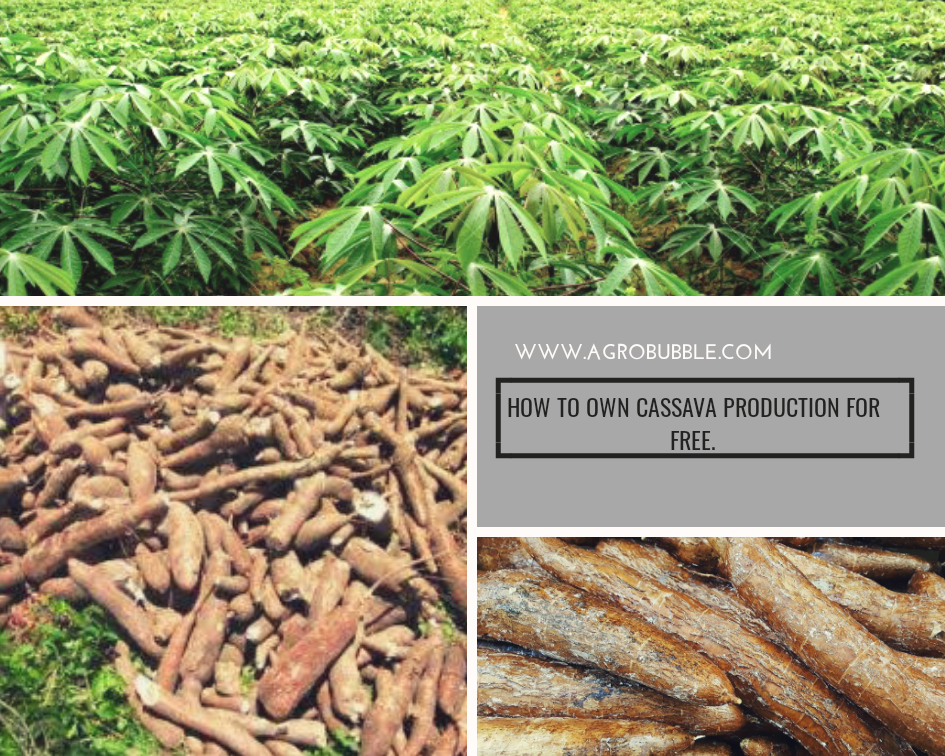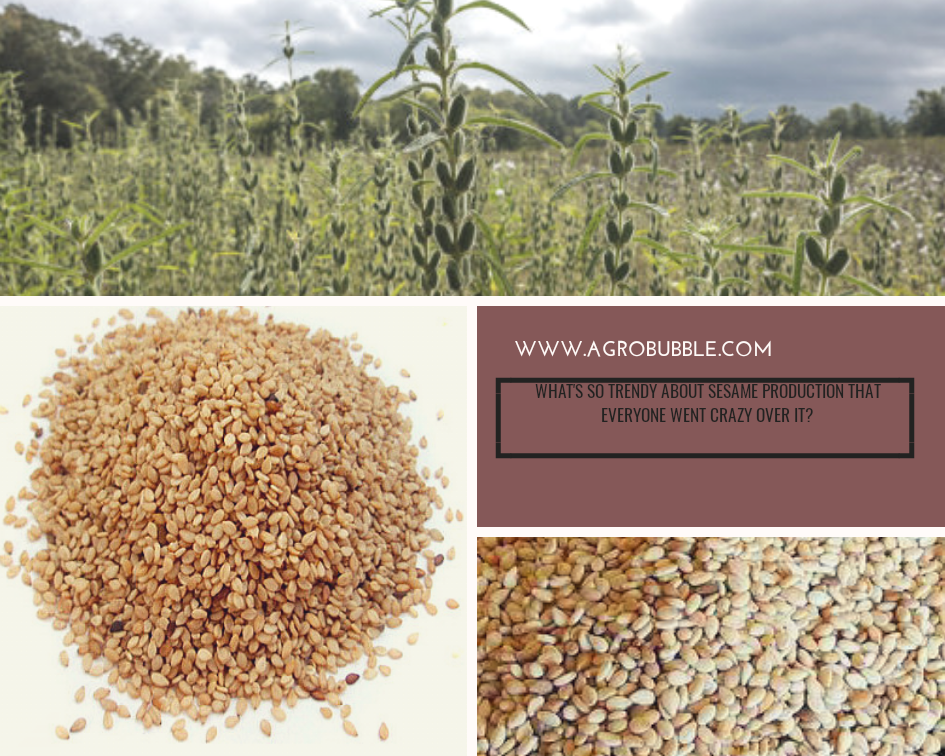Agro Pursuit
Wheat Production: Learning Wheat Production Is Not Difficult At All! You Just Need A Great Teacher!
Wheat production is the most important crop production of the world, which is being harvested somewhere in every month of the year. More hectares of land worldwide are devoted to wheat than any other crop and the world’s total production exceeds that of any other grain. It is the preferred grain for food in advanced […]

Wheat production is the most important crop production of the world, which is being harvested somewhere in every month of the year. More hectares of land worldwide are devoted to wheat than any other crop and the world’s total production exceeds that of any other grain.
It is the preferred grain for food in advanced countries. Unlike many other cereal crops, wheat is mainly a food rather than a feed crop.
After processing, the crop product is consumed directly by man, usually as a flour product (bread, pastries, cakes, crackers, macaroni and spaghetti). Wheat is also used in the manufacture of dextrose and alcohol.
In producing wheat flour, the by- products which are higher in protein content serve as a valuable protein supplement in livestock feeds.
The straw provides a valuable fodder. It is used for making baskets and hats, thatching and as packing material.
Read Also: 9 Things You Should Know About Catfish Production
Wheat production has gained prominence in the import economy of Nigeria which has necessitated various governments to invest in its local production.
SITE SELECTION FOR WHEAT PRODUCTION
Wheat is adaptable to a wide range of growing conditions, but is best suited to cool climates with moderate rainfall.
Cool weather is especially important during the tillering and early growth stages.
Wheat can be grown on a wide range of soils, but does best on well-drained, fertile soils of medium to heavy texture.
However, very heavy or very sandy soils should be avoided.
Wheat prefers neutral to slightly alkaline soils.
The site for wheat production must be an area with a permanent source of water irrigation.
FIELD MANAGEMENT FOR WHEAT PRODUCTION
Field measurement is very important because its accuracy guides farmers to know their farm sizes for vital decisions on farm operations including the right amount of inputs needed and the anticipated yields from the farms.
The use of (Geographical positioning System, GPS) hands receiver has simplified the rigor of land measurement. Land area can be easily measured using a GPS receiver while transecting the perimeter of the land.
VARIETIES OF SEEDS FOR WHEAT PRODUCTION
It is advisable for Wheat Farmers to source for improved seed variety from their ADPs, NASC or research Institute near your location. This is because good quality seeds are difficult to get from open markets.
Read Also: Learn How To Make More Money With Catfish Hatching
Nevertheless, there are a number of wheat varieties in Nigeria which you should bear in mind such as:-
1. SAM WITH-5 (Siete-Cerros)
2. SAMWHIT-6 (Pavon F.76)
3. SAMWHIT-7 (Bulbul)
4. SAMWHIT-8 (Solanika)
5. LACRIWHIT-1 (Seri-M82)
6. LACRIWHIT-2 (Cettia)
7. LACRIWHIT-3 (LINFEN)
8. LACRI WHIT-4 (AtillaGanAtilla).
Though, the most common varieties now are SeriM82 and AtillaGanAtilla.
LAND PREPARATION FOR WHEAT PRODUCTION
The ground should be thoroughly cultivated, either manually or mechanized.
The seed bed should be well – pulverized but compact.
Beds (Check basins/Border strips) are made just before sowing followed by pre-sowing irrigation and land levelling.
Land preparation should be carried out before the end of October. After clearing, the site should be ploughed and harrowed to give a good tilt. Prepare your land before the end of October. After clearing, the site should be ploughed and harrowed or harrowed only to give a good tilt.
It is recommended that sowing be carried out between the first week of November to mid December in all areas.
PLANTING DATES, TIME AND METHODS FOR WHEAT PRODUCTION
The optimum time for sowing is decided by several factors, the most important is the temperature.
In northern Nigeria, the middle to end of November i.e. 15th-30th November has been found to be the most suitable time for sowing.
The seeds may be broadcast by hand, but this may result in fairly poor germination, wasted seed, and irregular plant stand.
Sowing Methods – -Seed Rate (kg/ha)- – Spacing.
Broadcasting – – 80-100 – – As Uniform as Possible.
Drilling – – 40-80 – – 20cm-25cm inter- row.
Dibbling – – 30-40 – – 20cm-25cm×20cm-25cm.
INTEGRATED SOIL FERTILITY MANAGEMENT FOR WHEAT PRODUCTION
The improved wheat varieties have shown positive response to N up to 120-135kg/ha.
Applications may be in 2 to 3 splits on light-textured soils. For better fertilizer use efficiency.
The recommended rates are 120kg N, 40 kg P2O5 and 40 kg K2O per hectare.
If NPK is 15:15:15 apply 6 bags + 2 bags of Urea at planting and 2 bags of Urea 4 weeks after planting per hectare.
If NPK is 20:10:10, apply 9 bags of planting and 2 bags of Urea at 4 weeks after planting per hectare.
SOIL, WATER AND WEED MANAGEMENTS FOR WHEAT PRODUCTION
In Wheat Production, wheat thrives well under good soil conditions.
Rice requires Clay/Loam, Loamy soils, or sandy/loam soils.
It is also important to grow wheat in rotation with legume crops to provide natural soil enrichment.
It is recommended to apply 5-10 tons of Farm Yard Manure in order to improve soil nutrients, texture and structure.
WATER MANAGEMENT
The first irrigation of wheat should be given immediately after planting to thoroughly wet the soil. Irrigation is done at an interval of 5 to 10 days depending on the weather condition and soil type.
Irrigation at tillering, heading and grain filling is essential as these growth stages are sensitive to moisture stress and thus, adequate water should be available to the crops at these critical periods.
WEED MANAGEMENT
Weeds are not a major problem to wheat where you have good land preparation; timely sowing, good spacing, fertilizer application and correct irrigation practices.
Recommend herbicides include:-
Pre-emergence herbicides such as Butachlor in the form of Butaforce, Butastaretc, and the rate of 4-5 litres can be applied.
Post-emergence herbicides such as Basagram 480EC can be used for grasses at 2.5lrs per hectares at 3-4 weeks after sowing to control grasses. For broadleaf weeds, use 2-4D at the rate of 1-2ltrs/ha, 3-4 weeks after sowing.
SAFETY USE AND HANDLING OF PESTICIDES
Precautions must be followed to ensure safe use of pesticides.
Even after use, the empty containers must be disposed of very well by burying them.
Instructions as stated on the label of the pesticide must be followed while only trained personnel should apply pesticides at recommended rate.
The personnel should also wear protective clothing during application of pesticide
HARVESTING AND PROCESSING OF WHEAT
Wheat is usually harvested with sickle, or mechanically with a combine harvester, when the grain is completely ripe and straw is brittle and golden.
The moisture content of the grain must be 13% or less.
If it is higher, the grain needs to be dried before it can be safely stored.
Where harvesting and threshing are done manually, winnowing must be done to separate the grain from the chaff.
What is your own take on this post? Use the COMMENT section below to share.






